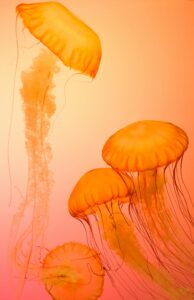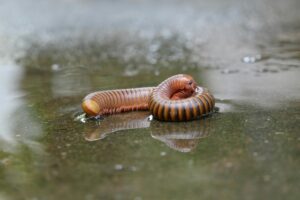Maharashtra State Board Science Solution Part 2 – Animal Classification
Maharashtra state Board Science solution Part 2 Chapter 6 – Animal Classification
https://biosimplified.com/shahu-college-screening-test-syllabus-2024/
Animal Classification –
- Identify me .
- I am diploblastic & acoelomate Which phylum do I belong to ?
Solution – Phylum Cnidaria
b). My body is radially symmetrical. Water vascular system is present in my body. I am referred as fish though I am not. What is my name ?
Solution – name is Star fish & Belongs to Phyllum Echinodermata
c). I live in your small intestine. Pseudocoelom is present in my thread like body. In which phylum will you include me ?
Solution – In Phyllum Aschelminthes
- d) Though I am multicellular, there are no tissues in my body. What is the name of my Phylum ?
Solution – Phyllum Porifera
- Write the characters of each of the following animals with the help of classification chart
Bath sponge, grasshopper, rohu, penguin, frog, lizard, elephant, jellyfish
Solution –
| Organism | Level of organisation | Symmetry | Coelom | Notochord |
| Bath Sponge | Cellular level | Assymetrical | Absent | Absent |
| Grasshopper | Organ System level | Bilateral Symmetry | Coelomate | Absent |
| Rohu | Organ System level | Bilateral Symmetry | Coelomate | Present |
| Penguin | Organ System level | Bilateral Symmetry | Coelomate | Present |
| Frog | Organ System level | Bilateral Symmetry | Coelomate | Present |
| Lizard | Organ System level | Bilateral Symmetry | Coelomate | Present |
| Elephant | Organ System level | Bilateral Symmetry | Coelomate | Present |
- Write in Brief about Progressive Changes in Animal Classification
Solution – There are many scientist Who have contributed in the Field of classification
- Aristotle – Aristotle made earliest attempt to classify living organism on scientific basis
- Aristotle divided animals into 2 groups
- 1) Animal who has red blood
- 2) Animal who don’t have red blood
- Carl Linnaeus – In 1735 Carl Linnaeus divided living organism into 2 Kingdom as follows
- 1) Vegetabilia
- 2) Animalia
- c) Haeckel – in 1866 Classified Living Organism into 3 kingdoms- Protista, Plants and Animal
- d) Chatton – In 1925 Based on Types of cell Chatton created 2 groups
1) Prokaryotes
2) Eukaryotes
- e) Kopland – in 1936 Kopland classified living organism into 4 group
1) Monera
2) Protista
3) Plants
4) Animal
- f) R H Whittakar – In 1969 he Divided Living organism into 5 Group as follows
1) Monera
2) Protista
3) Fungi
4) Plant
5) Animal
Artificial Method of Classification – Was Given By Aristotle
The Following Scientist followed Artificial method of Classification.
- Theophrastus
- Pliny
- John Ray
- Carl Linnaeus
Natural System Of Classification – it is Based on Various Criteria such as
- Organization of Body
- Bio- Chemical Properties
- Cell Types
- Chromosome
Now other Method of Animal Classification are also Proposed by Many Scientists like
- Classification Based on Evolution – it was Used by Dobzhansky and Meyer
- Carl Woose Recently Proposed New Method of Animal Classification – it is Biological Classification known as 3 Domain System
- What is the exact difference between grades of Organization and symmetry Explain with examples. ?
Solution – Body of animals is made up of cells. In case of multicellular animals, many cells are performing different functions in their body. & According to Arrangement of cells the organism are classified as follows
- Cellular Grade Organization – In case of Multicellular animals if tissues are not formed their body Organization is called as ‘Cellular grade organization’.
Ex – Phylum Porifera
- Cell- Tissue Grade Organization – In Some Animals cells come together to form Tissue & With help of those tissue all body function are performed by animal such organization is called as Cell- Tissue Organization
Ex – Phylum Cnidaria
- Tissue Organ Grade Organization – in Such Type of organization The tissues are organized to form the Organ but it is not Complete organ system
Ex – Phylum Platyhelminthes
- Organ – System grade Organization – in this type of organization Many Organs Joins together to form the different organ System that Perform various function in the body
Ex – Human ,Frog
Q 5) Answer in Brief
- Give Scientific Classification of Shark upto Class
Solution –
| Kingdom | Animalia |
| Phylum | Chordata |
| Sub Phylum | Vertebrata |
| Class | Chondrichthyes |
- Write Four Distinguish Characters of Phylum Echinodermata
Solution –
- Calcareous spines are present on the body of these animals; hence they are called as
- These animals are found only in ocean.
- Their body is Triploblastic, eucoelomate. And it is Radially symmetrical in adult However, they show bilateral symmetry in larval stage.
- They Perform locomotion with the help of tube-feet.
Tube feet are also useful for capturing the Prey
- c) Distinguish Between Butterfly and Bat with the help of four Distinguishing Properties
Solution –
| Bat | Butterfly |
| It Fly with the help of Patagium | It Fly with the help of Wings |
| It belongs to Phylum Chordata | It belongs to Phylum Arthropoda |
| As Arthropoda the Body is Divided into Head,Thorax & Abdomen | Body is Divided into Head, Neck, Trunk and Tail |
| Have Joint Legs | Doesn’t Have joint Legs |
- d) To Which Phylum does Cockroach belong ? Justify Your Answer with Scientific Reason .
Solution –
Cockroach Belongs to Phylum Arthropoda hence it shows all the Distinguished Charector of Phylum Arthropoda like –
- Chitinous Exoskeleton is present around the body
- It has Joint Legs
- Body of these animals is triploblastic, eucoelomate, bilaterally symmetrical and segmented .
Q 6) Give Scientific Reason
a) Though tortoise lives on land as well as in water, it cannot be included in class- Amphibia
Solution –
There are Certain Reasons that we Don’t Include Tortoise in Class Amphibia
- The Tortoise belongs to Class Reptiles and the Animal belong to class reptiles show different Character from Class Amphibia
- The Organisms belong to class Amphibia Respires or Breath through the gill at their Larva Stage and thorough Lung at adult stage but if we Look Tortoise it always Breath through the Lungs
- The Tortoise have Rough ,Dry and Scaly Skin known as Exoskeleton but Amphibian have Smooth Skin
hence Tortoise are Not Included in Class Amphibia
b) Our body Irritates if it comes in contact with jelly fish
Solution –
The Jellyfish belongs to Phylum Cnidaria/ Coelenterate
They Possess Tentacles
These Tentacles Possess Venom that Protects themselves and also being Used in Capturing Prey
If our body Comes in Contact with such Tentacles that Poison Release in our body and our Skin or body Start Irritate
it comes in contact with jelly fish.

- Answer the following questions by choosing correct option
a Which special cells are present in the body of sponges (Porifera) ?
- Collar cells. 2. Cnidoblasts.
- Germ cells. 4 Ectodermal cells
Solution – Collar cell
- Which of the following animals’ body shows bilateral symmetry ?
- Star fish. 2. Jelly fish.
- Earthworm. 4. Sponge
Solution – Earthworm

- Which of the following animals can regenerate it’s broken body part ?
- Cockroach. 2. Frog.
- Sparrow. 4. Star fish.
Solution – Star fish
- Bat is included in which class?
1 Amphibia 2 Reptilia
3 Aves 4. Mammalia
Solution – Mammalia
8. Complete the following chart
Solution –
| Body Cavity | Germ Layer | Phylum |
| Absent | Cellular Organism | Porifera |
| Absent | Triploblastic | Platyhelminthes |
| Pseudocoelom | Triploblastic | Aschelminthes |
| Present | Triploblastic | Arthropoda |
- Complete the following chart – Solution
| Type | Character | Example |
| Cyclostomata | Jaw less mouth | Myxine |
| Pisces | Gill Respiration | Rohu |
| Amphibia | Can live in water & on land | Frog |
| Mammalia | Presence of Mammary Glands | Whale |
| Reptilia | Poikilotherms cold Blooded | Lizzard |
